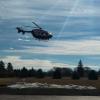-
Posts
146 -
Joined
-
Last visited
About bugalou

- Birthday 08/11/1981
Profile Information
-
Four Letter Airport Code For Weather Obs (Such as KDCA)
KMEM
-
Gender
Male
-
Location:
Southavern, MS
-
Interests
Computers, technology, Miami Dolphins football, outdoors, and of course the freaking weather.
Recent Profile Visitors
1,304 profile views
-
This is my take away. The outbreak was exceedingly unique from a meteorological perspective. Milton's oddball storm track played into this and worked perfectly to both pull in dryer air around the storm to allow surface warming and increased SBCAPEs to pretty wild levels for a tropical system. Then injecting all that hurricane spin made the helicity high with a virtually unlimited tap of moisture for supercells. I think we will look back on this as another "perfect storm" type event from a tornado production stand point due to the hybrid nature of both a tropical and extra-tropical factors that helped produce all the supercells.
-
Really starting to get that warm core seclusion look on the radar. Winds on the south side of this will likely persist inland further than normal if the tropical airmass holds on in the core long enough which it seems to be doing.
-
Frictional wobble from approaching landfall is likely to help Tampa bay miss worst case scenario.
-
Sting jet impacts are certainly on the table here if enough dry air interacts with the core. I am quietly watching that possibility. This could bring wind impacts further inland. Things have to be just right (wrong?) though.
-
To be fair, the eye's landfall matters greatly for the impacts on Tampa Bay.
-
Especially with the winds mixing it all up from the storm itself. I don't think its going to make any difference in strength either way.
-
Barometric pressure readings from various stations and ships to make a rough isobar grid over time combined with wind readings. That and first hand accounts.
-
I think some of those very heavy bands effectively mixed winds down the the surface and combine this with the forward speed of the storm. It goes to show you there is far more to hurricanes than just that category they make at landfall.
-
The surge may not be as bad due to the fast movement not being able to build the seas ahead of it. Considering the coastline's shape the wind gain with the fast forward speed will likely be better than the storm surge would be if it was moving slower.
-
I rarely post here, but I had to for this. This isn't my weather forum, but if you did post this at my weather forum I would ban you. Your jargon in your posts isn't appreciated. This storm will affect, and likely end, real lives. It is ok to be excited by the weather. I get that, but we also need to be cognoscente and respectful to the fact it affects real people. Have some tact. Keep your memespeak over at kiwifarms.
-
Most of the general public probably doesn't even realize there is a hurricane threat at this point.
-
My theory is there are multiple mid and low level circulations and elongations that are competing and interfering with one another and things just aren't stacking. Models do an extremely poor job on this scale too. This seems to have been a problem for the past 2 days.
-
I don't know, I can see it happening. Its highly unusually to have such a cold and dry airmass this far south with a Hurricane right at the coast. If that airmass gets in the way of Ian I can see rapid weakening occur as cP is like fire retardant to a Hurricane without thermal wind/jet support to interact with and introduce baraclonicity a la Fiona. Its just plowing directly into the backside polar high.
-
We have a chance to see two record RI's within 24 hours of each other in 2 different basins if Ian can get cranking over that bathtub water south of Cuba tonight.
-
That's because its all about the strength of the trof in the NE. If the trof is stronger and digs more its going to advect more CP dry air southward while making Ian go further east. If the trof is weaker and digs less there is going to be less dry air advected south and less steering influence on Ian (and the ridge to the NW of Ian pulls it more westward).













